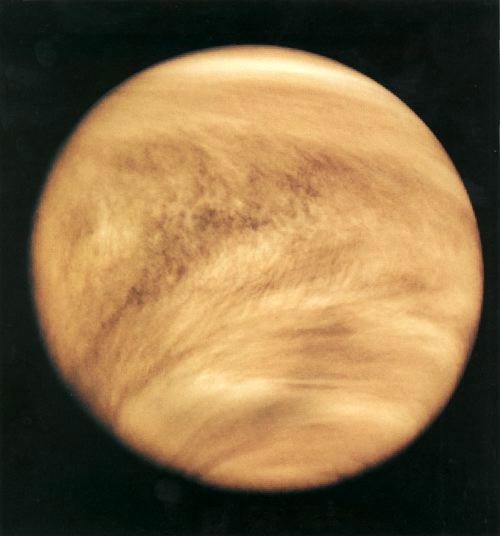







| BOOKS | F. A. Q. | ARTICLES | TALKS | ABOUT KEN | DONATE | BEYOND OUR KEN |
|---|
By Ken Croswell
Published on ScienceNOW (May 29, 2013)

Credit: Pioneer Venus. NASA.
Was young Venus an Eden or a hell? Though the planet is closer to the Sun than Earth is, our star was dimmer in those early years, so Venus—about the same size and mass as Earth—may have been cool enough to host oceans and even life. But new work published online today in Nature dashes that hope. Both Earth and Venus were born hot, with molten surfaces and probably thick steam atmospheres. Because Earth was farther from the Sun, however, its surface cooled and solidified fast, within 4 million years; when rain fell out of the steamy atmosphere, it landed on solid ground and created oceans. In contrast, the new calculations indicate that Venus was probably doomed: its proximity to the Sun kept its surface hot and molten for up to 100 million years, preventing the formation of oceans. Instead, during that lengthy time, steam remained in the air, so sunlight split the water vapor into hydrogen and oxygen. The lightweight hydrogen escaped into space, leaving Venus dry and barren forever.
Ken Croswell earned his Ph.D. in astronomy from Harvard University and is the author of The Alchemy of the Heavens and The Lives of Stars.
"An engaging account of the continuing discovery of our Galaxy...wonderful." --Owen Gingerich, The New York Times Book Review. See all reviews of The Alchemy of the Heavens here.
"A stellar picture of what we know or guess about those distant lights."--Kirkus. See all reviews of The Lives of Stars here.
| BOOKS | F. A. Q. | ARTICLES | TALKS | ABOUT KEN | DONATE | BEYOND OUR KEN |
|---|